One of the most interesting facts – and there are many – about Lincoln’s Inn is that the Elizabethan playwright and actor Ben Jonson, a contemporary and rival of William Shakespeare, worked as a bricklayer building the perimeter wall while he was “resting” from his thespian activities.
He would not have been instrumental in the construction of the Tudor-looking Library and Great Hall above, nor the Main Gate, below, as they were built in the mid-19th century; the cheeky mock-Tudor arrivistes.
Lincoln’s Inn is a strange and amazing place. Situated to the north of the Strand and the west of Chancery Lane, it occupies a very large piece of London real estate, much of which is covered by lawns. They must be some of the most valuable lawns in the world. The perimeter fence contains a diversity of buildings that were built between the 15th and 19th centuries. It also keeps out the noise and craziness of London creating a very real oasis of calm. Some of the most wonderful of all of London’s Georgian terraces are here. My favourite sort of buildings. And these, because of the money derived from the business carried out here, have been superbly preserved like a Disneyland of British architecture.
Lincoln’s Inn is probably the oldest of the four Inns Of Court, which are the organisations to which a barrister must be a member of if they are to practice in England and Wales. Lincoln’s Inn has records going back to 1422 but may well date back a further century. The houses around the Inn contain chambers of lawyers.
There are three main squares, Old Square, New Square and Stone Buildings. New Square is only 300 years old having been completed in 1697. It’s very lovely in the spring, below, and yet so close to town. Proves it pays to hold onto land in London.
These gates and benches back onto New Square.
Across from the Main Gate is the Old Hall and Chapel, which are among the older buildings in the Inn, predating the English Civil War. These arched cloisters form a memorable section.
Famous members of the Inn have included Henry VIII’s Chancellor Sir Thomas More, Prime Ministers Pitt The Younger, Gladstone, Asquith, Thatcher and Tony Blair and the poet John Donne. Donne was the preacher of the Inn at the time the Chapel was built in the 1620’s. Sadly Rumpole of the Bailey was not a member, he was part of the fictional Outer Temple. Charles Dickens worked as a clerk in legal chambers in New Square as a teenager and included Lincoln’s Inn in several books including Bleak House. Esther Summerson remarks at the quiet of the Old Square compared to the bustle of the street she leaves as she enters the Inn from Chancery Lane:
“we passed into sudden quietude under an old gateway, and drove on through a silent square until we came to an odd nook in a corner, where there was an entrance up a steep, broad flight of stairs, like an entrance to a church. And there really was a churchyard, outside under some cloisters, for I saw the gravestones from the staircase window.”
However bamboozling, Esther and Charles would find modern London, they would still find many familiar sights with the Inn.
There are some lovely iron work details throughout the Inn, including this lamp above a door to chambers in the Old Square.
And this lamp in the corner of New Square.
And in the arrangement of the more prosaic railings that edge the gully basements.
This perfect Georgian terrace marks the edge of New Square.
And possibly my favourite gate in London is the passage between Carey Street and New Square with the Wildy and Sons legal bookshop either side.
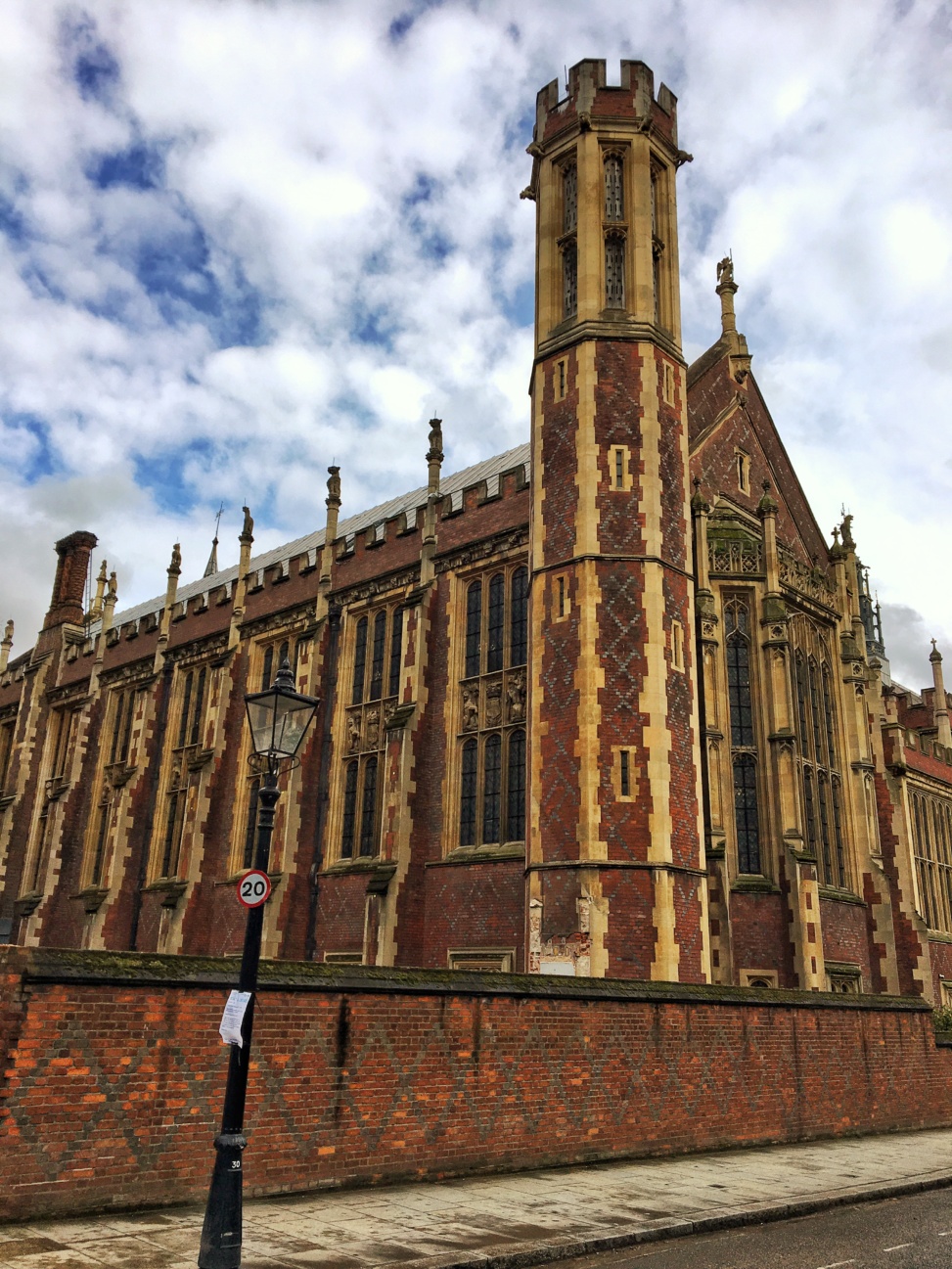
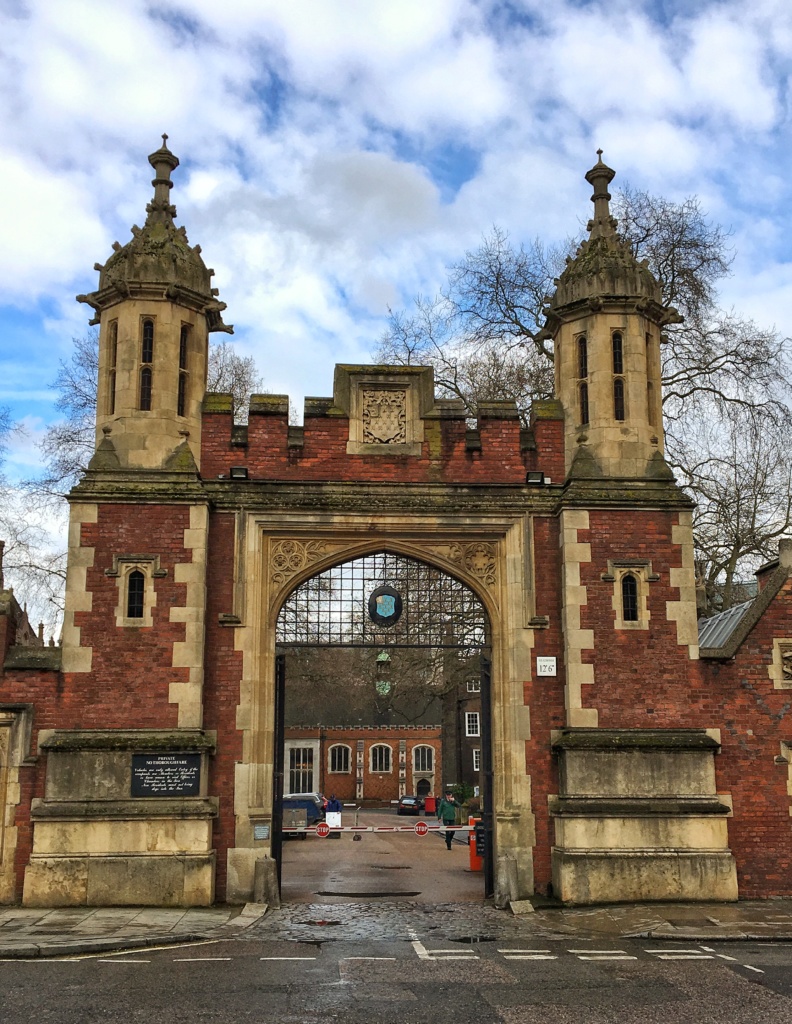
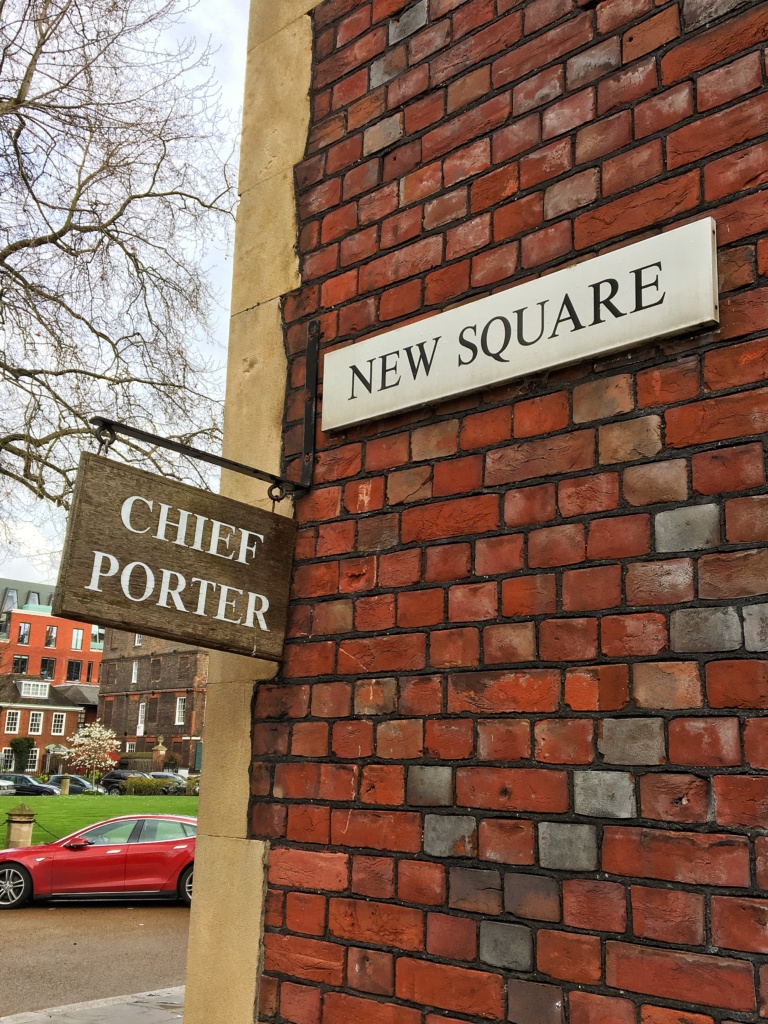
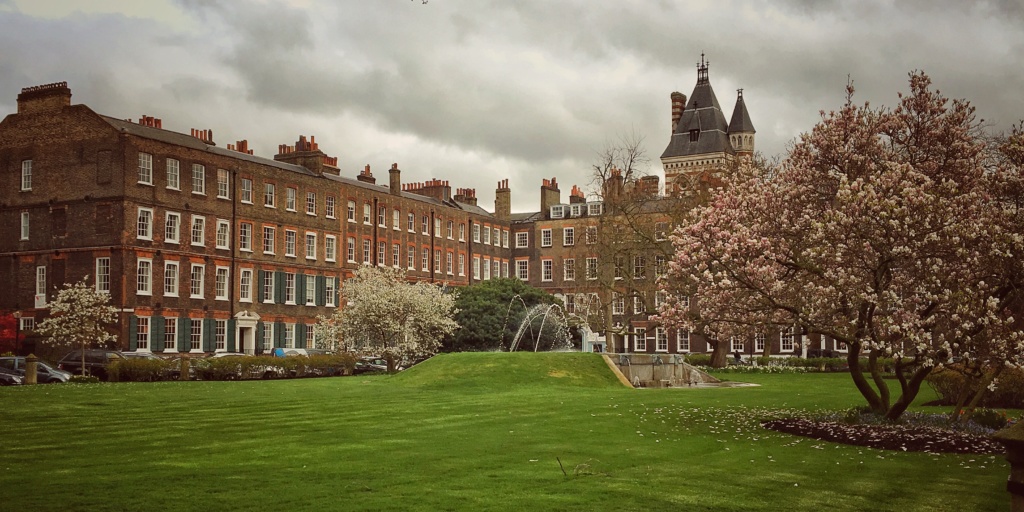
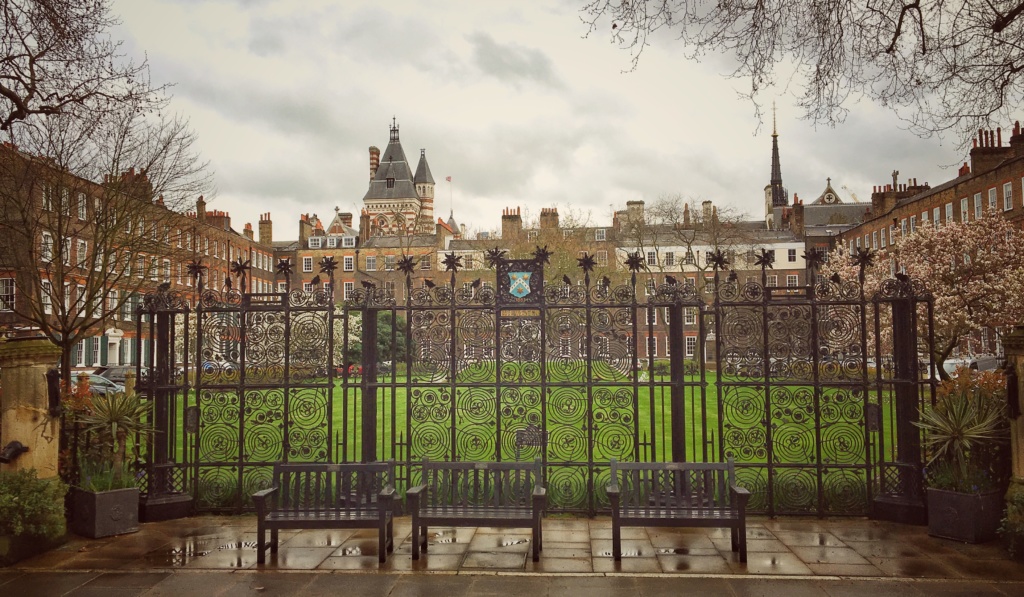
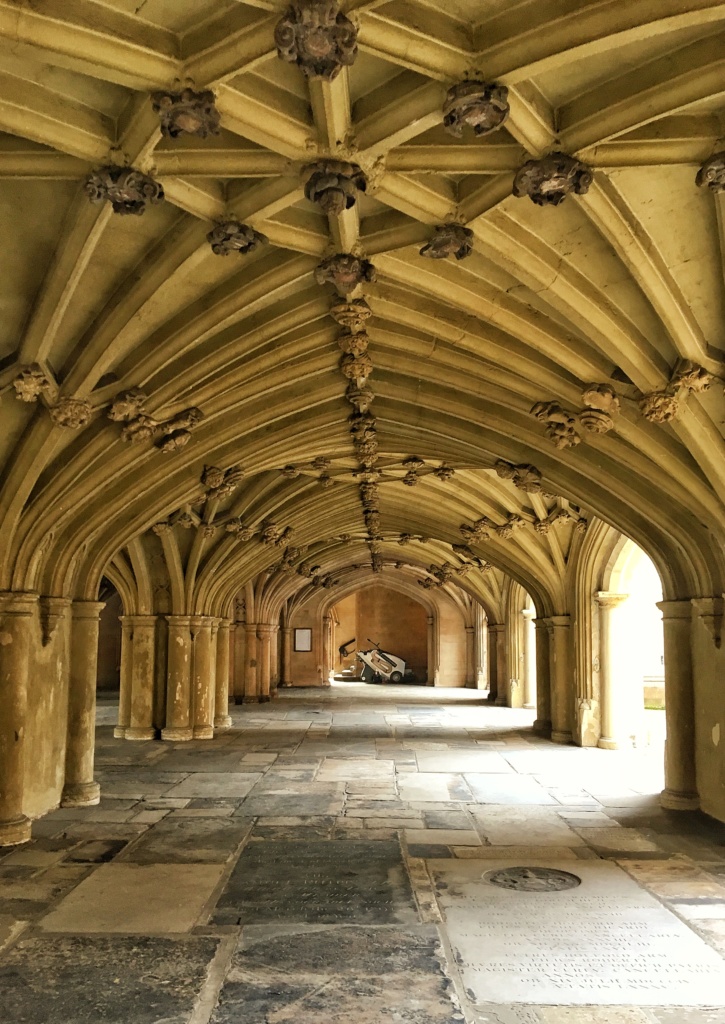
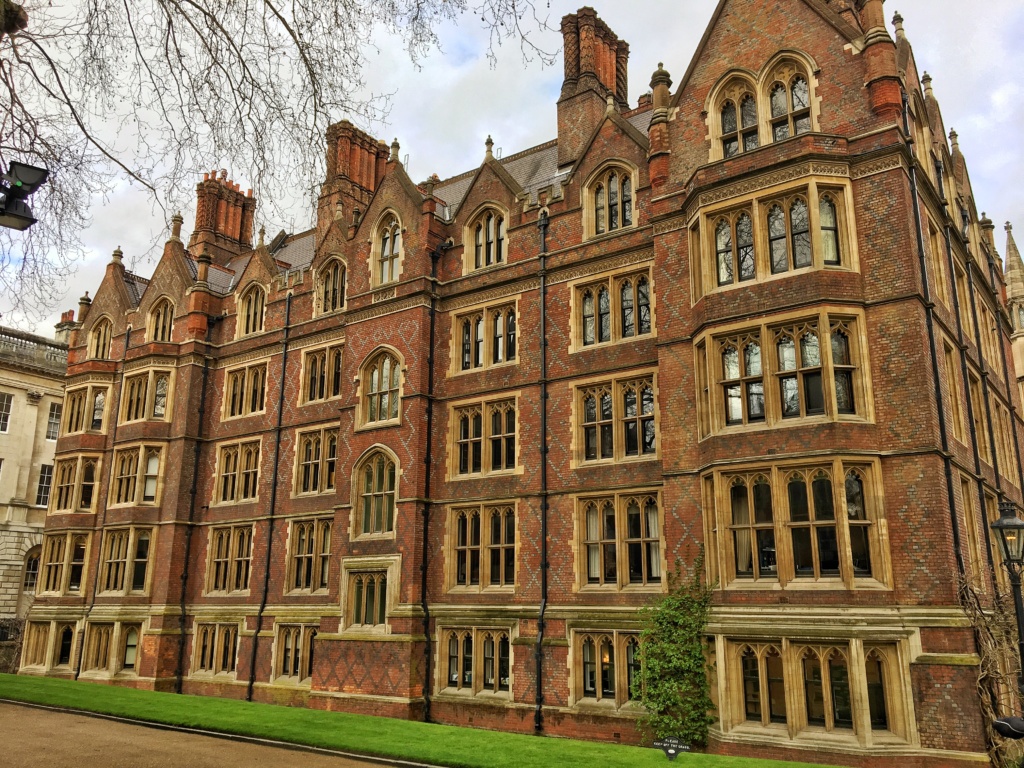
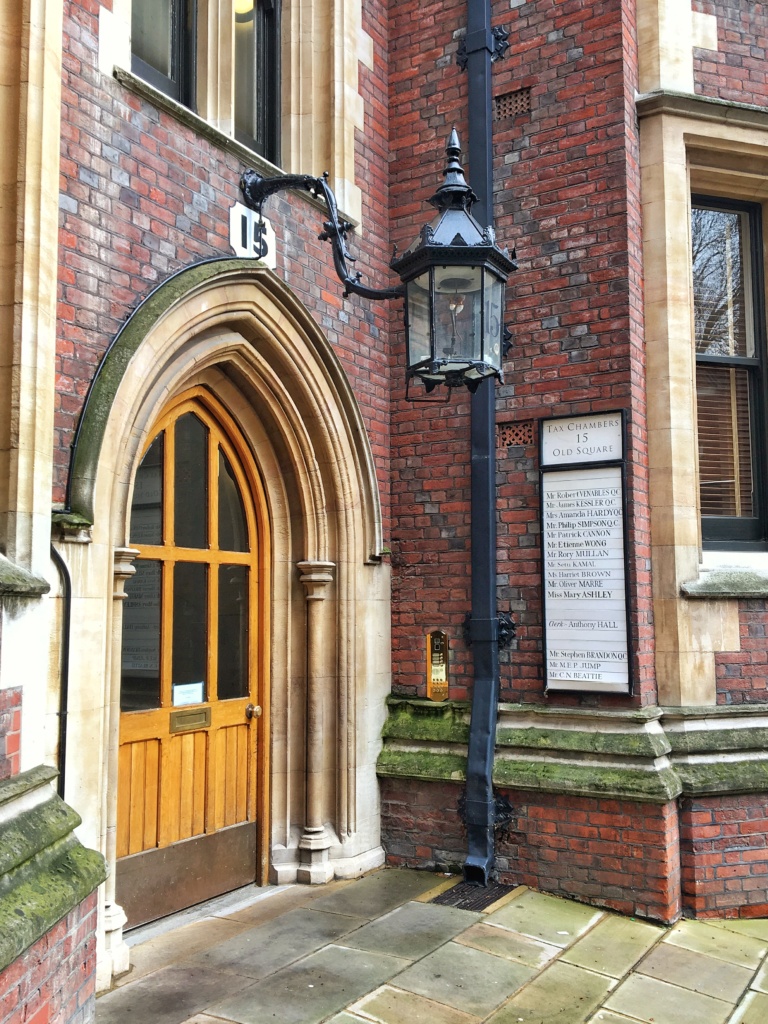
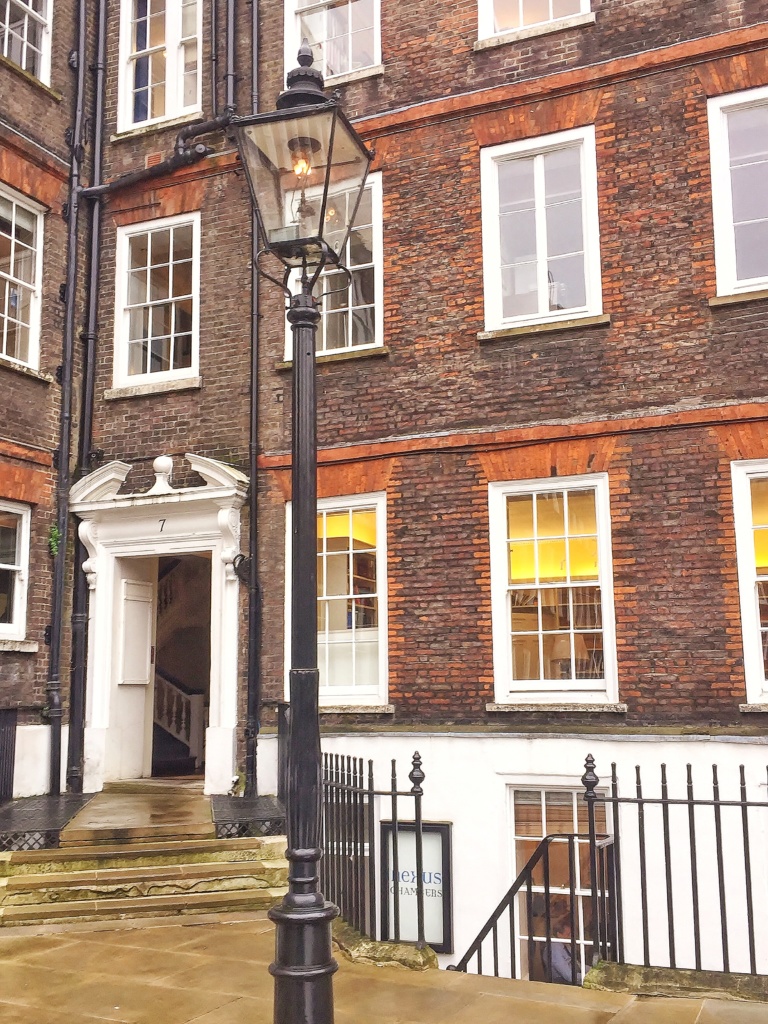
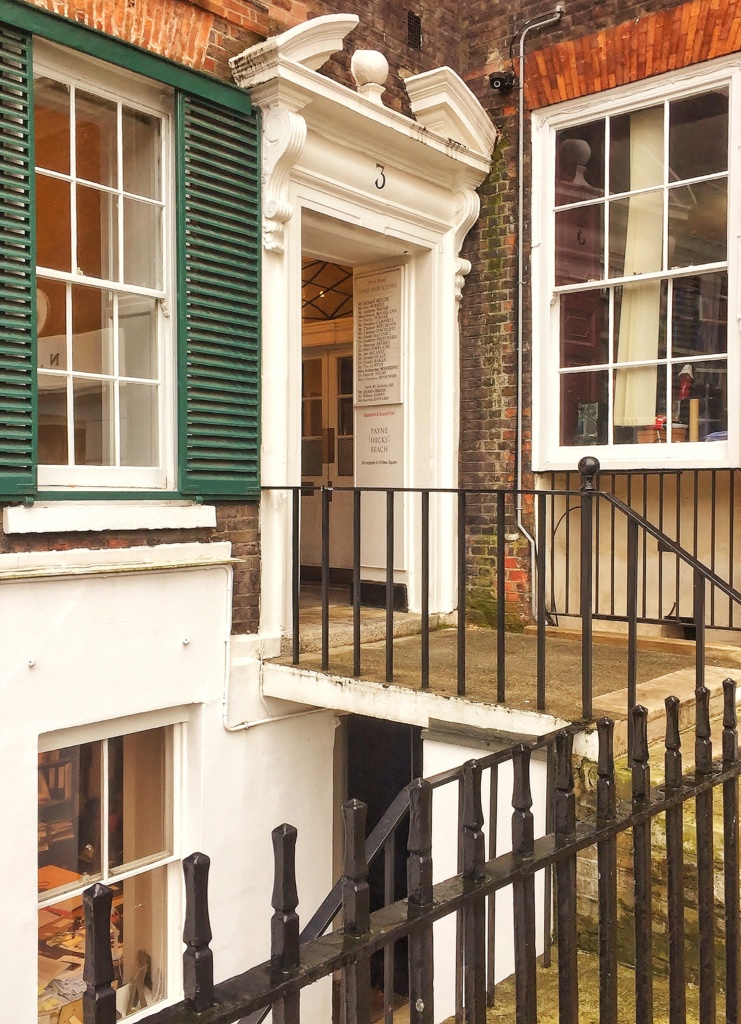
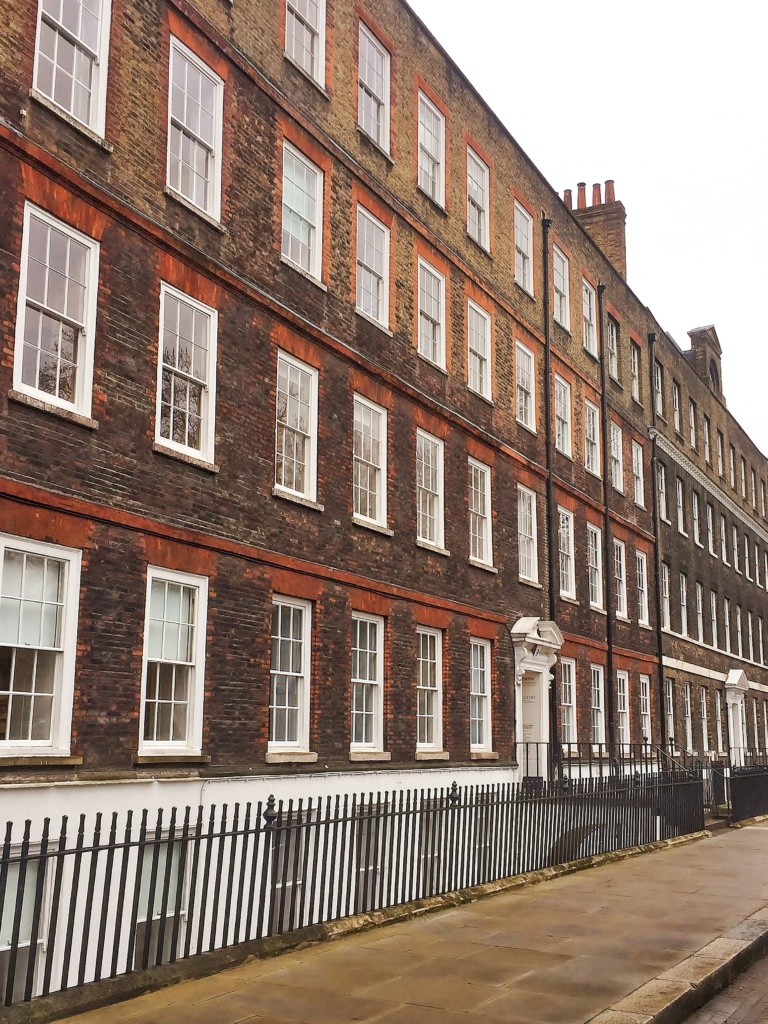
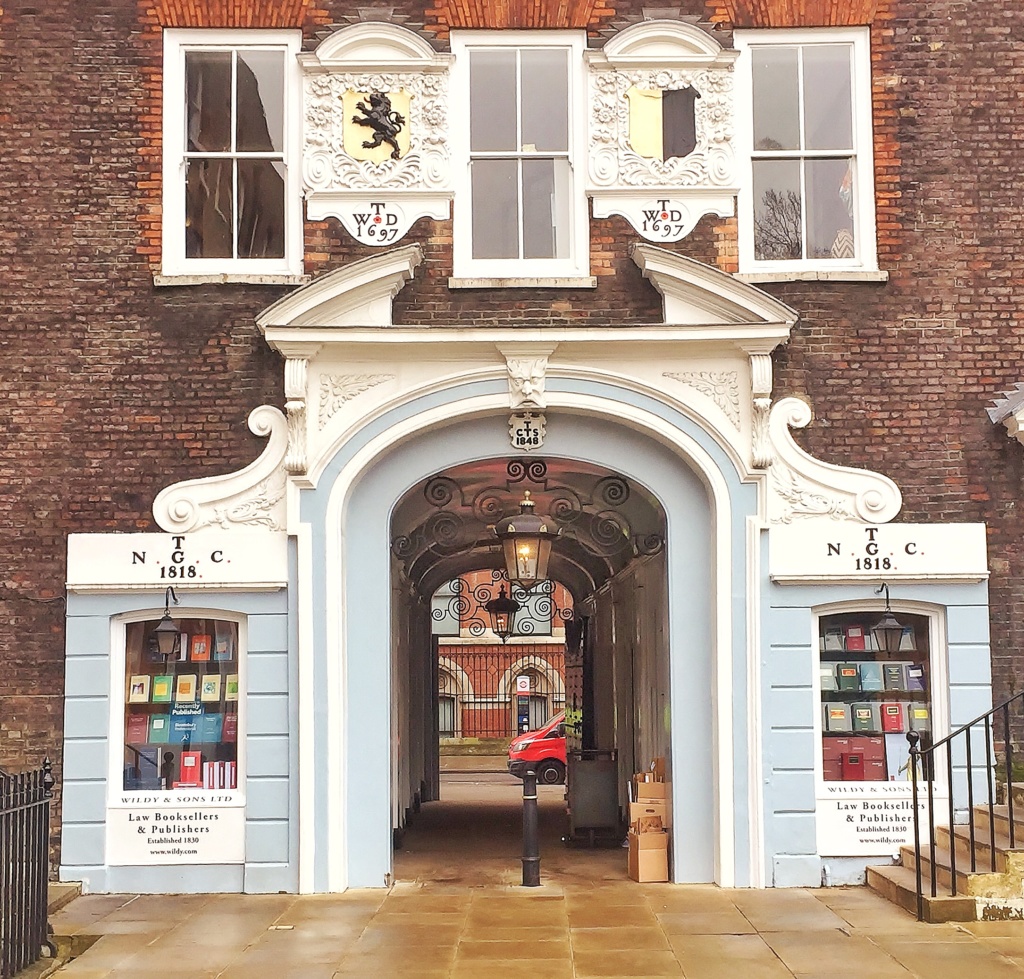
1 Comment
1 Pingback